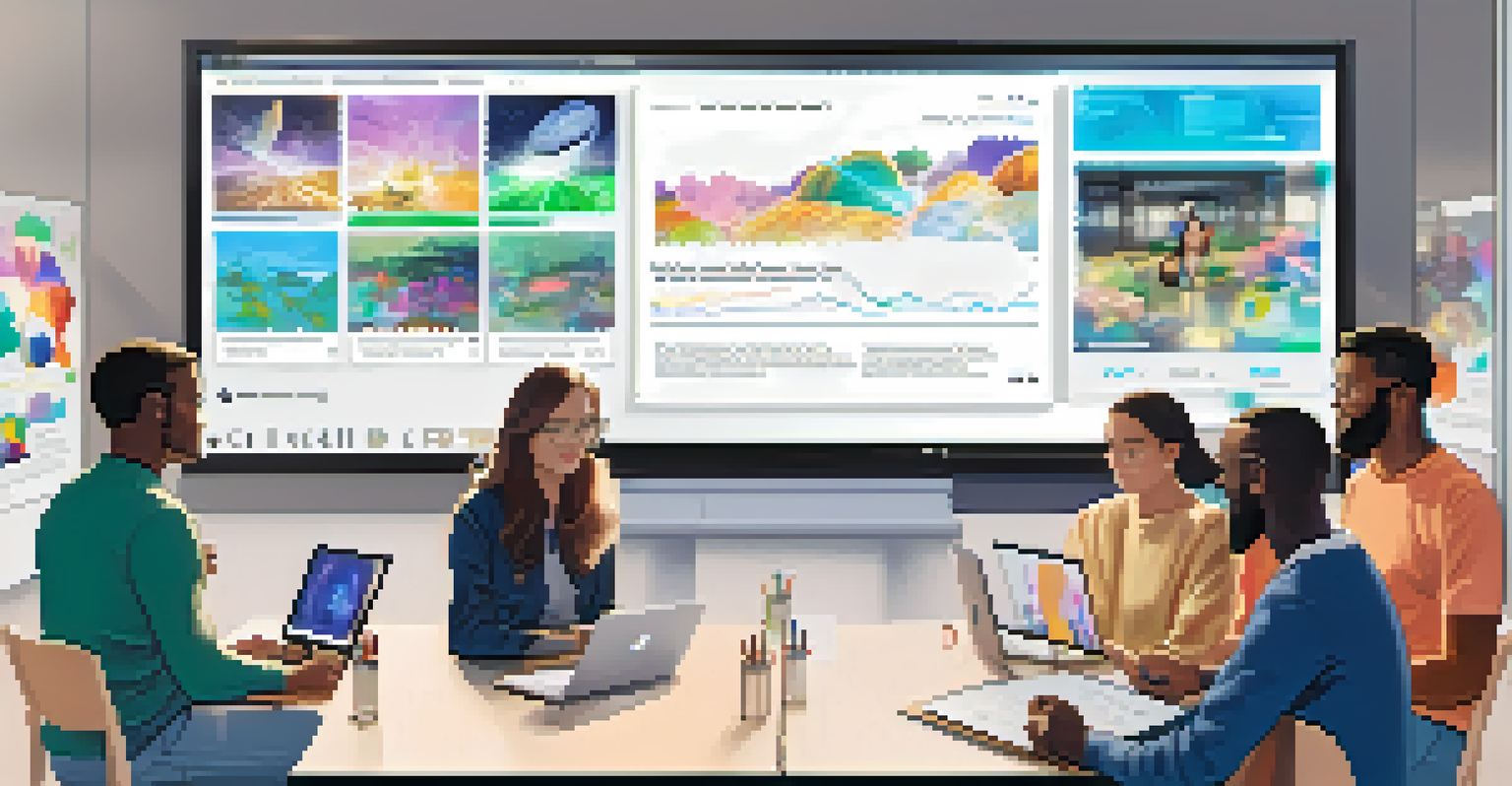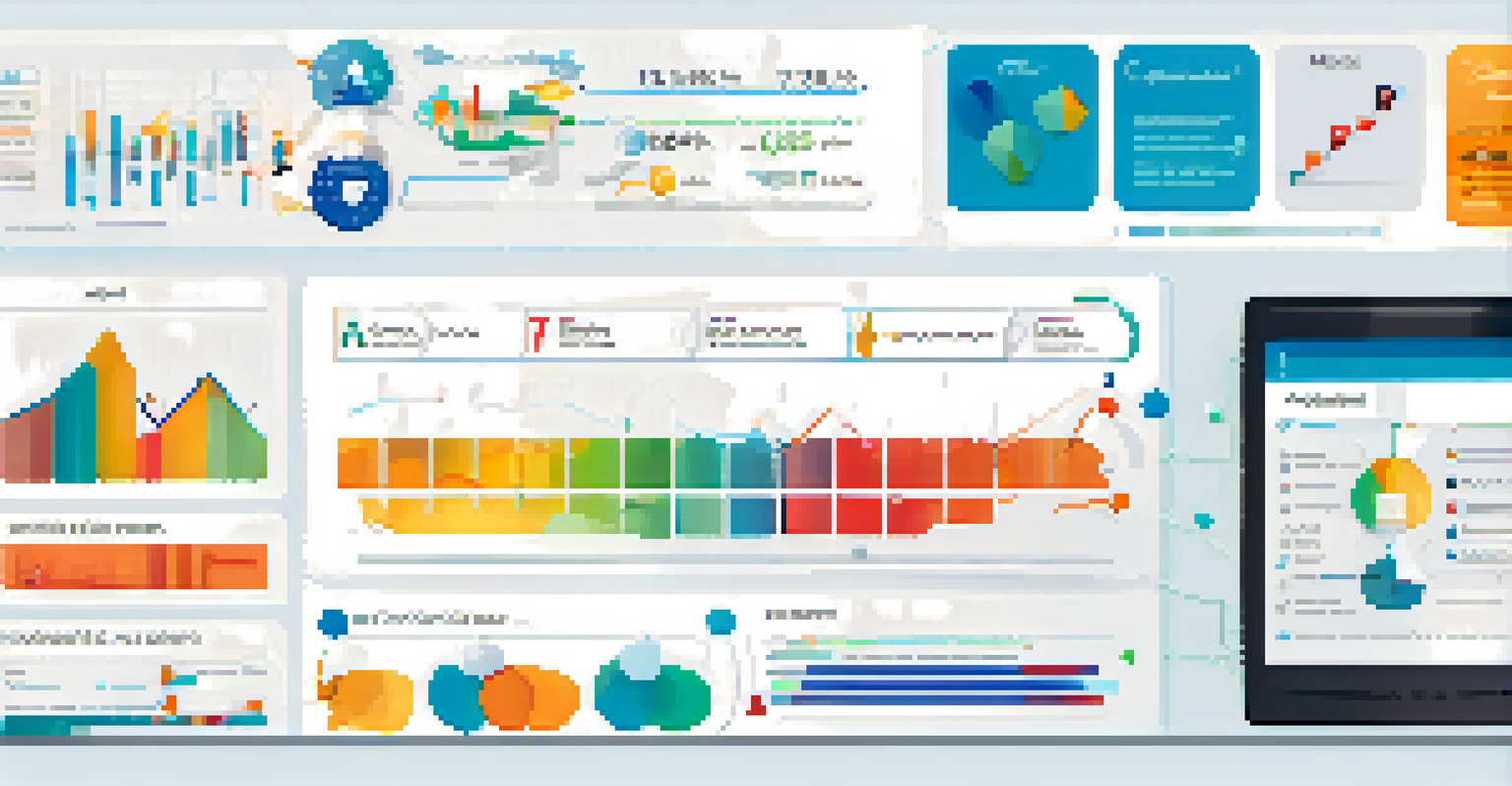User-Centric Testing: Validating NFT Platform Design Choices

Understanding User-Centric Testing in NFT Platforms
User-centric testing focuses on evaluating a platform based on real user interactions. In the context of NFTs, this means observing how users engage with the platform's features and functionalities. By prioritizing user experience, developers can identify pain points and areas for improvement that may not be evident through traditional testing methods.
If you don't understand your users, you're not building the right product for them.
For example, if users struggle to navigate the marketplace, it can significantly impact their willingness to purchase NFTs. By conducting user-centric testing, designers can gather valuable insights directly from the target audience, ensuring that the platform aligns with their expectations and needs.
Ultimately, the goal is to create a seamless experience that encourages engagement and fosters trust. As the NFT market evolves, understanding user behavior becomes crucial for delivering a platform that meets their demands effectively.
Why User Feedback is Crucial for NFT Platforms
User feedback acts as a compass for developers, guiding them toward the features that resonate with their audience. In the NFT space, where trends can shift rapidly, understanding user preferences is vital for staying relevant. Gathering feedback helps in making informed design choices that enhance the overall user experience.

Consider a scenario where a particular NFT feature, like a bidding system, is too complex for average users. Feedback can highlight this issue, allowing developers to simplify the process and make it more accessible. This iterative approach ensures that the platform evolves in line with user expectations.
User-Centric Testing Enhances UX
Prioritizing user interactions helps developers identify pain points and improve the overall user experience on NFT platforms.
Moreover, user feedback creates a sense of community, making users feel valued and heard. Engaging with your audience not only boosts user satisfaction but also fosters loyalty, which is essential in a competitive market.
Key Metrics to Measure User-Centric Testing Success
To assess the effectiveness of user-centric testing, certain key metrics should be monitored. These include user engagement rates, bounce rates, and conversion rates, all of which provide insights into how users interact with the NFT platform. Tracking these metrics allows developers to gauge whether the design choices made resonate with users.
The best way to predict the future is to design it.
For instance, if a platform experiences high bounce rates on a specific page, it may indicate that the content is not engaging or relevant. By analyzing these metrics, designers can pinpoint areas for improvement and make data-driven decisions to enhance user experience.
Another important metric is user satisfaction, often measured through surveys or Net Promoter Score (NPS). Understanding how users feel about the platform can guide future design iterations and help create a more enjoyable experience.
Conducting Usability Tests with NFT Users
Usability testing involves observing real users as they navigate the NFT platform, providing insight into their interactions. This process can uncover issues that may not be apparent during the design phase. For example, users might overlook a critical feature due to poor placement, which usability testing would promptly reveal.
Engaging diverse user groups in these tests ensures that various perspectives are considered. This diversity is crucial in the NFT space, where users may have vastly different experiences and expectations. Gathering input from both seasoned collectors and newcomers can lead to a more universally accessible platform design.
Feedback Drives Platform Evolution
User feedback acts as a compass for developers, guiding them to make informed design choices that resonate with their audience.
Additionally, usability testing fosters a collaborative environment, where designers can engage with users directly. This interaction not only aids in identifying problems but also strengthens the relationship between developers and the user community.
A/B Testing: Optimizing NFT Platform Features
A/B testing is a powerful tool in user-centric testing, allowing developers to compare two versions of a feature to see which performs better. This method is particularly useful when deciding between design elements, such as button colors or layout variations. By analyzing user interactions with each version, designers can make informed decisions that optimize the platform's usability.
For instance, if one version of a landing page leads to higher conversion rates than another, it indicates that users prefer that particular design. This data-driven approach eliminates guesswork and focuses on what truly resonates with the audience.
Moreover, A/B testing encourages a culture of experimentation. Developers can continuously test and refine features, ensuring that the platform evolves in tandem with user preferences and industry trends.
Iterating Based on Testing Results
Once testing is complete, the next step is to analyze the results and iterate on the design. This process involves taking the insights gained from user feedback and usability tests to make necessary adjustments. For example, if users expressed confusion about a particular feature, designers can rethink its placement or functionality.
Iteration is essential in the fast-paced world of NFTs, where user expectations are constantly changing. By remaining adaptable and responsive to user needs, developers can create a platform that not only meets current demands but is also future-proof.
Data Metrics Measure Success
Tracking key metrics like engagement and bounce rates provides insights into user interactions, helping refine the NFT platform's design.
Additionally, sharing iterations with users fosters transparency and trust. When users see that their feedback leads to tangible changes, they feel more connected to the platform and are more likely to remain engaged.
The Future of User-Centric Testing in NFTs
As the NFT landscape continues to evolve, user-centric testing will play an increasingly vital role. With new technologies and trends emerging, understanding user behavior will be paramount for platform success. Developers who prioritize user experience will likely have a competitive edge in this dynamic market.
Looking ahead, integrating advanced analytics and AI into user testing could lead to even deeper insights. These technologies can help predict user behavior, allowing developers to proactively address potential issues and enhance the overall experience.

In conclusion, the future of NFT platforms hinges on a commitment to user-centric design. By continuously validating design choices through testing and feedback, developers can create engaging, intuitive platforms that cater to the ever-changing needs of their users.